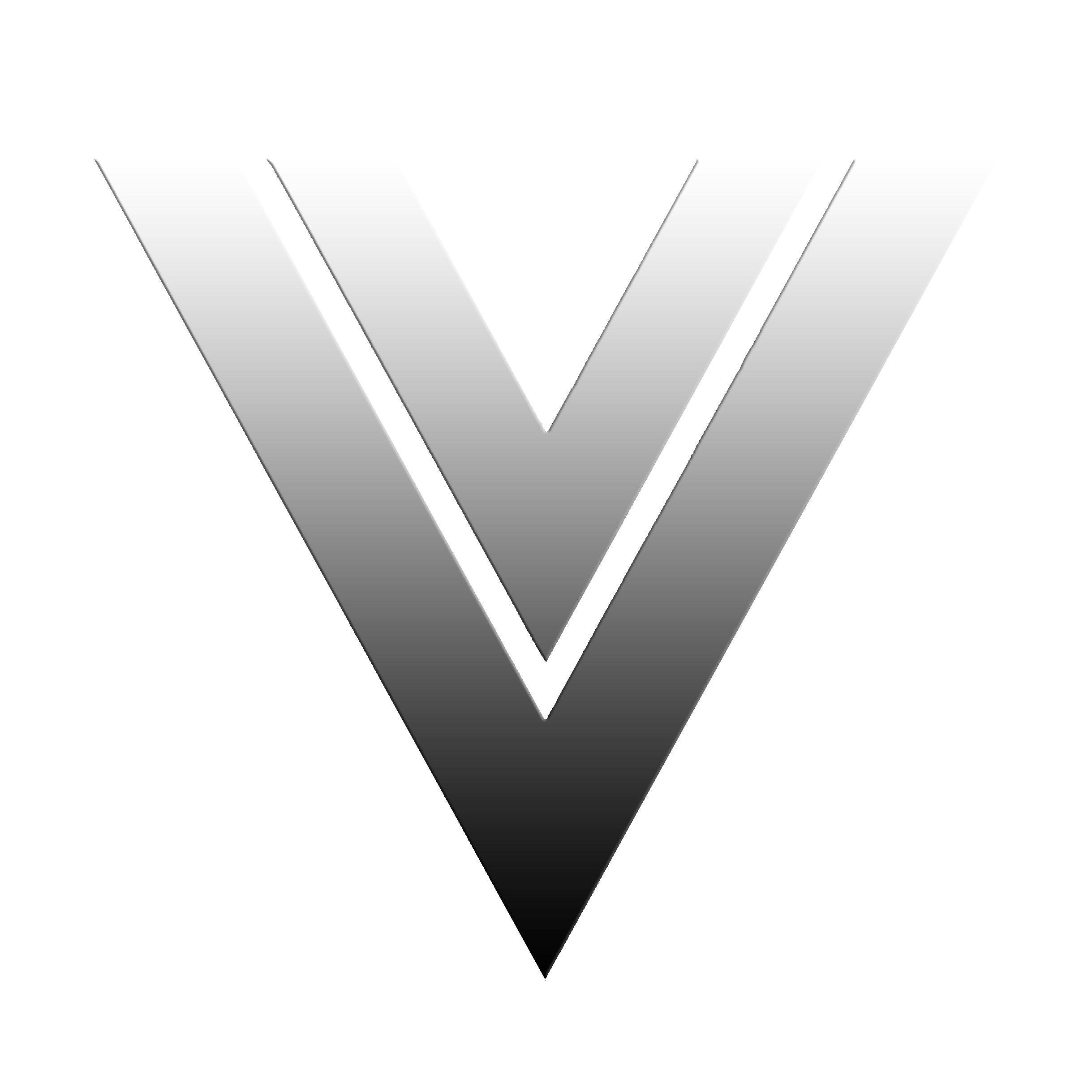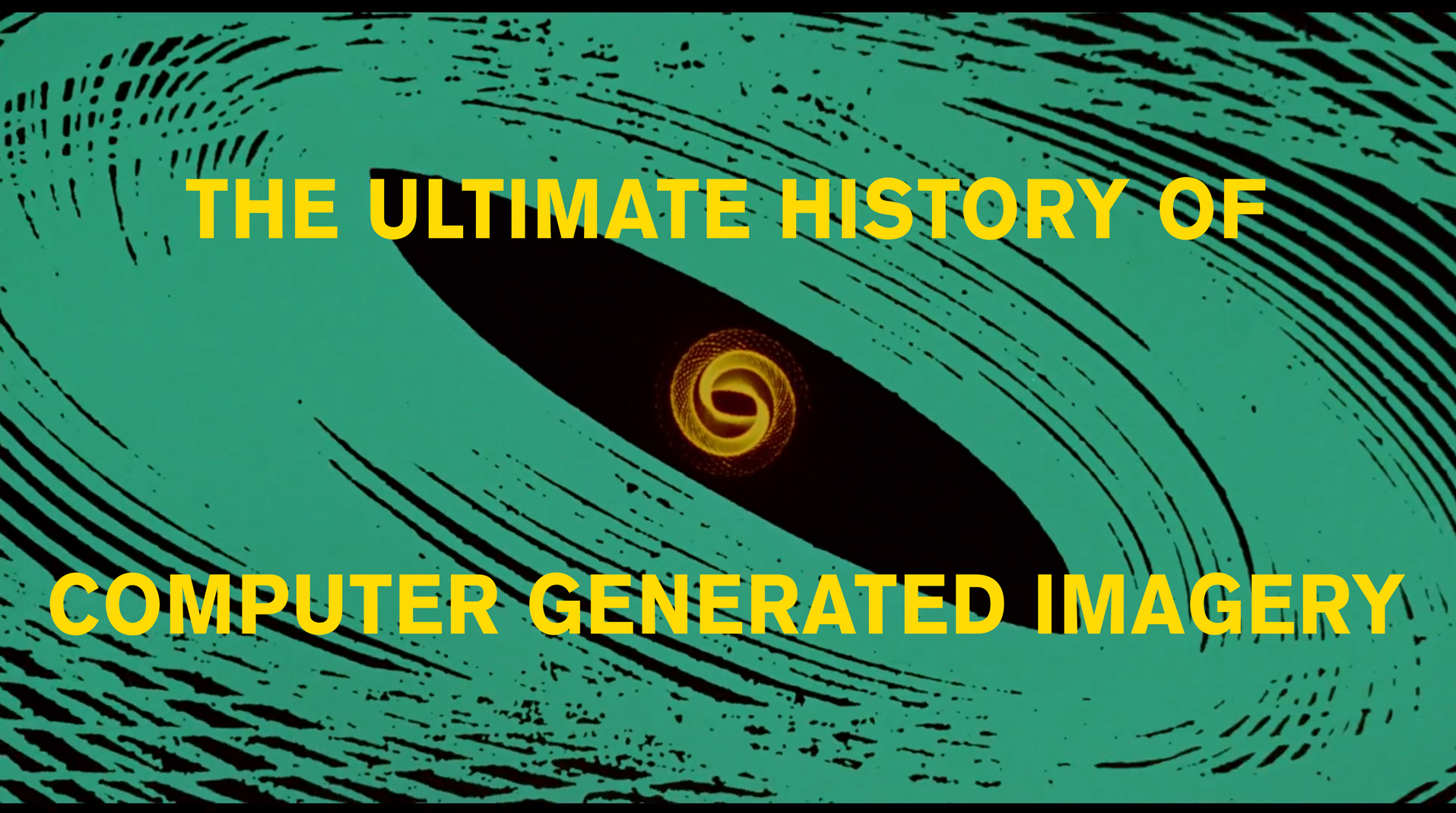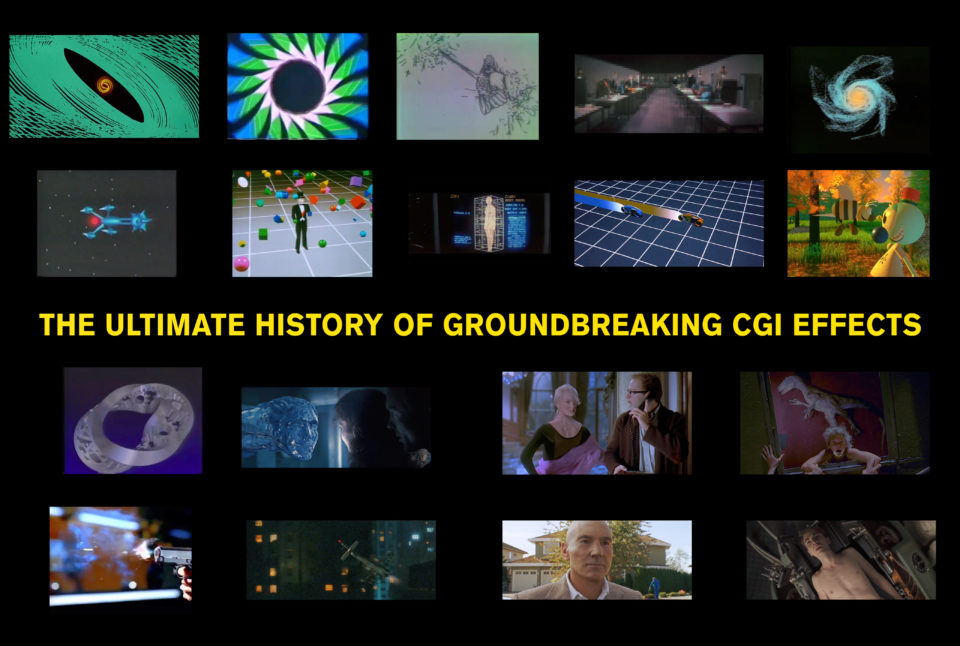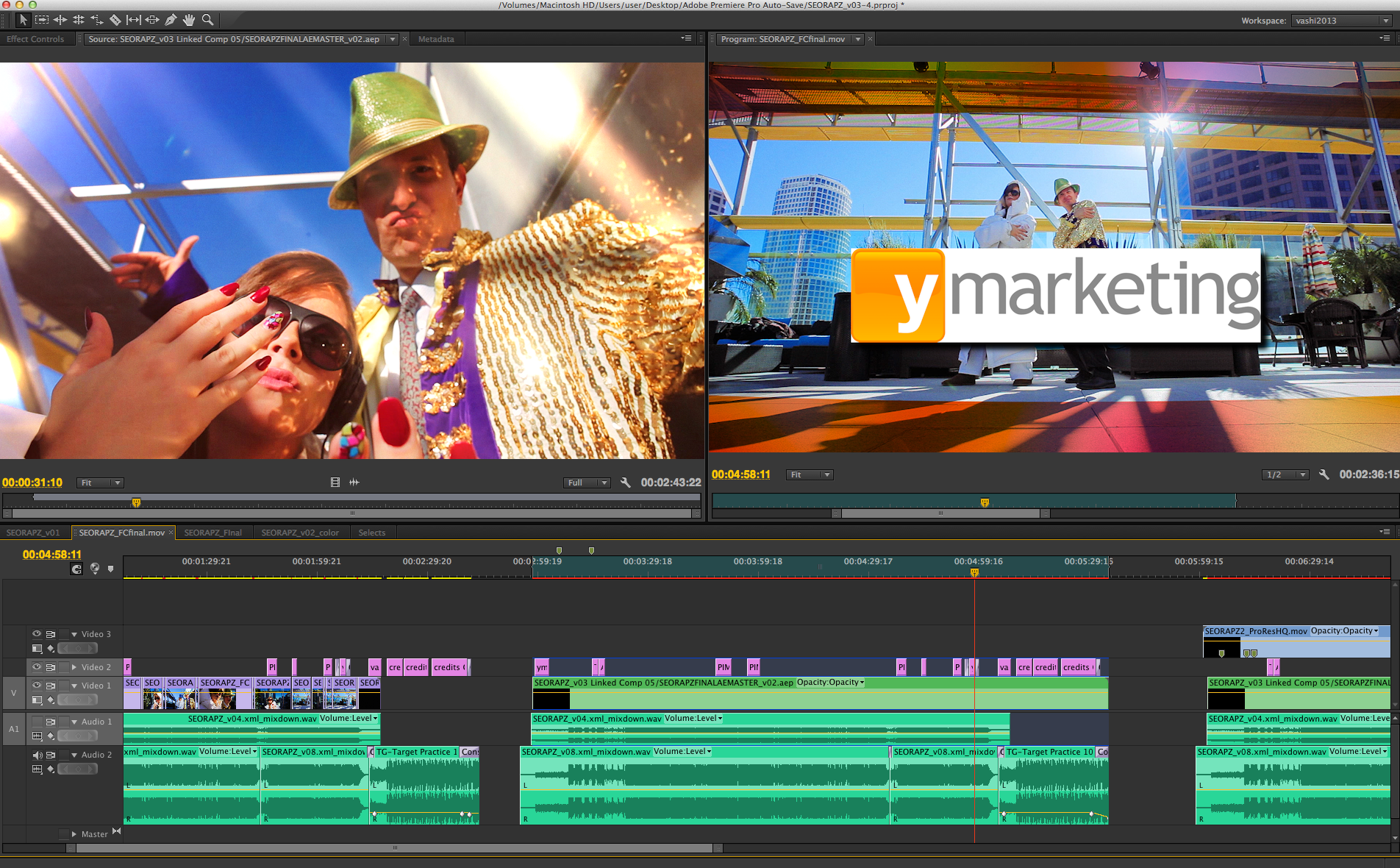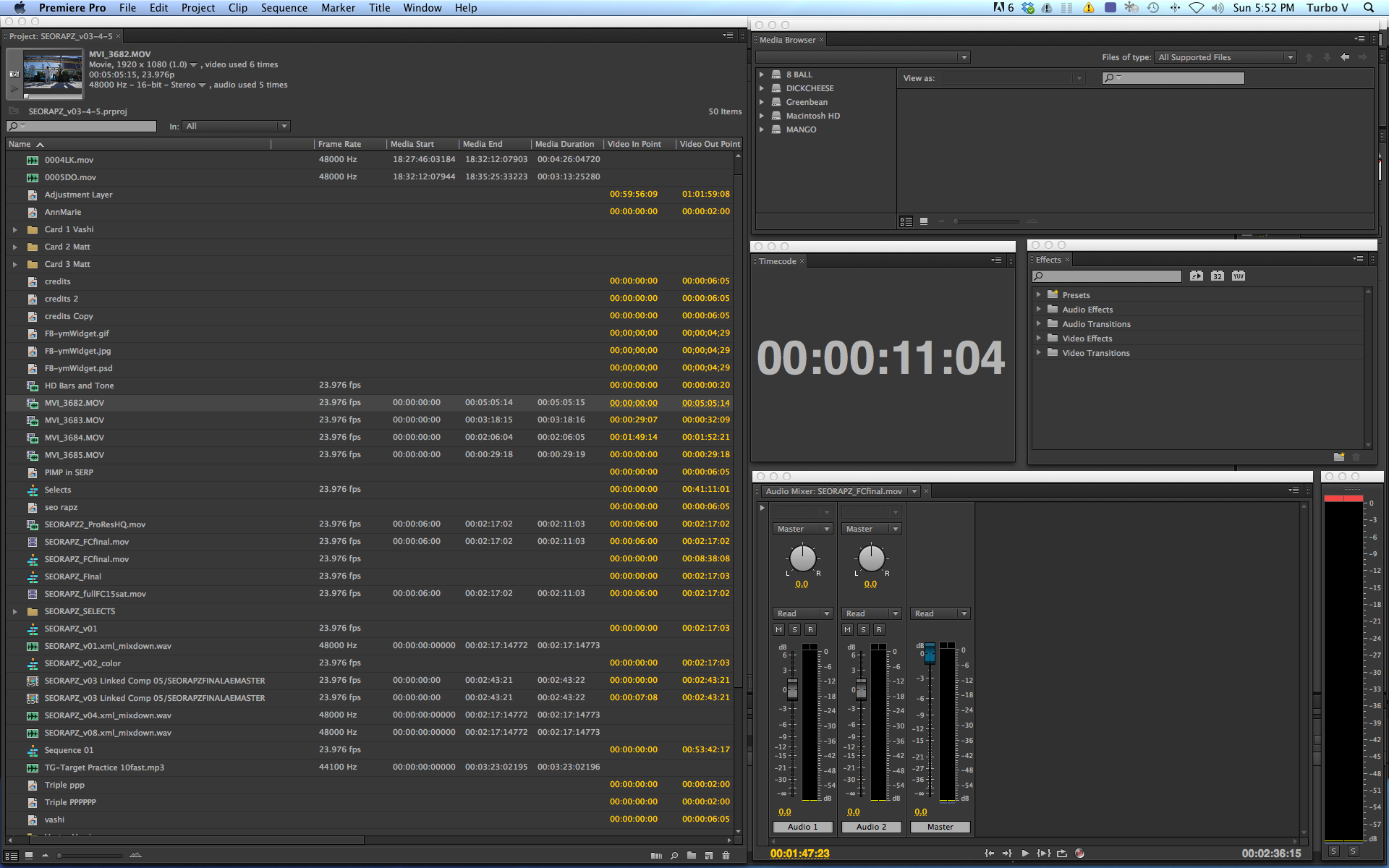Computer Generated Imagery (CGI) is one of many tools that talented artists and filmmakers use to help better tell their stories. CGI is not created by the push of some magic button. It is the culmination of careful thought, design, experimentation and the pure creativity of artists. The impossible becomes reality and when done well, evokes wonder and awe as it transports the audience deeper into the story…
Let’s quickly clarify the difference between CGI and computer animation. CGI encompasses both static scenes and dynamic images, while computer animation only refers to moving images.
The history of CGI goes back to the 1950’s, when mechanical computers were repurposed to create patterns onto animation cels which were then incorporated into a feature film. That first film which used CGI was Alfred Hitchcock’s VERTIGO (1958).
Thanks to the amazing and comprehensive website COMPUTER ANIMATION HISTORY-CGI over 250 examples of the first instances of every CGI method are chronicled with video examples covering the last 60+ years. Every filmmaker and artist should visit this website and Youtube channel to go down the rabbit hole…
18 of my favorite CGI moments in film history:
FIRST COMPUTER ANIMATION EVER – VERTIGO (1958)
John Whitney used a WWII anti-aircraft targeting computer on a rotating platform with a pendulum hanging above it to create the spiral elements in the opening sequence. With graphic designer Saul Bass, Whitney created the first computer animation in a feature film.
FIRST EXPERIMENTAL COMPUTER ANIMATED FILM – CATALOG (1961)
John Whitney created this film to build up his demo reel. This inspired Douglas Trumbull and his VFX work in 2001: A Space Odyssey.
FIRST DIGITAL MORPHING – HUMMINGBIRD (1967)
To demonstrate the morphing of hummingbirds, over 30,000 images were created and animated for the final film.
FIRST DIGITAL ANIMATION IN A FEATURE FILM – WESTWORLD (1973)
John Whitney Jr and Gary Demos digitally processed motion picture photography and created the pixellated POV of Yul Brynner’s gunslinger robot.
FIRST PARTICLE SYSTEM COMPUTER ANIMATION – COSMOS (1979)
Jim Blinn worked with Carl Sagan to create these animations including these spinning and interactive galaxies made from CGI particles.
FIRST CGI SPACESHIPS – MAGI Synthavision Demo (1980)
MAGI was formed in 1966 to evaluate nuclear radiation exposure. This technology was the basis for the first CGI spaceships.
FIRST MOTION CAPTURE CGI ANIMATION – THE JUGGLER (1981)
Presented at SIGGraph 1981, this demo led directly to Richard F. Taylor’s involvement in Disney’s TRON one year later in 1982.
FIRST FULL HUMAN BODY REALISTIC CGI – LOOKER (1981)
The futuristic computer scanning scene of Cindy (Susan Dey) was the first full human body CGI imagery ever.
FIRST COMBINATION OF CGI AND LIVE ACTION – TRON (1982)
First talking and moving CGI character (Bit). First combination of CGI character and live action character. First extensive (15 minutes) of fully computer-generated polygonal animation in a movie (Light Cycle sequence). First fully CGI background.
FIRST MOTION BLUR EFFECT – ADVENTURES OF ANDRE AND WALLY B (1984)
Motion blur – a post-processing effect that blurs and streaks moving objects in a photograph or sequence of frames. Rendered on a Cray X-MP/48 supercomputer and ten VAX-11/750 superminicomputers from Project Athena, provided by Cray Research, the fastest computer in the world at the time.
FIRST LIQUID METAL COMPUTER ANIMATION – CRANSTON/CSURI CLOCK DEMO (1985)
Computer scientist Chuck Csuri and investor Robert Cranston Kanuth formed the American computer animation company CCP. The liquid metal effect was later used by James Cameron in Terminator 2 (1991).
FIRST PHOTOREALISTIC FLUID MORPHING – THE ABYSS (1989)
Industrial Light and Magic (ILM) spent 6 months to create the 75 seconds of computer graphics needed to bring the creature to life.
FIRST HUMAN SKIN CGI ANIMATION – DEATH BECOMES HER (1992)
Industrial Light and Magic (ILM) used the first human skin CG software to replicate skin and link it to a body and head together with a digital neck.
FIRST DIGITAL FACE REPLACEMENT – JURASSIC PARK (1993)
Industrial Light and Magic (ILM) not only created the first photorealistic CGI dinosaurs but at the 0:42 second mark, you can see the digital face replacement for Ariana Richards’ stunt double as she hangs from the ceiling.
FIRST 3D BULLET TIME – SMIRNOFF COMMERCIAL (1996)
Created by BUF Compagnie for this Smirnoff commercial that aired in the UK. Three years later THE MATRIX (1999) popularized this technique of using still cameras to capture individual images then playing them back in sequence.
FIRST USE OF PHOTOGRAMMETRY IN A MOVIE – GODZILLA (1998)
Wire-frame 3-D models were created from photographs or real, still objects. The photos were then re-employed as texture maps, augmented with additional paintwork.
FIRST CGI DE-AGING – X-MEN: THE LAST STAND (2006)
For the opening de-aging effect, Sir Patrick Stewart and Sir Ian McKellen gave the Visual Effects Experts pictures of themselves as younger men, so that the computer program “LOLA” could make them look younger.
FIRST CGI BODY REPLACEMENT – CAPTAIN AMERICA: THE FIRST AVENGER (2011)
Paul Warren was used in pre-production to help develop the ‘Skinny Steve Rogers’ effect by CGI supervisor, Christopher Townsend, as well as one of the ‘Skinny Steve’ on set stand-ins.
The evolution and merging of analog to digital filmmaking has embraced so many innovative and new solutions to creative challenges. CGI is a liberating tool that can amplify the story and show us all new worlds. By revisiting the past…we can learn from the giants and break new ground in the future.
The 18 CGI filmmaking breakthroughs I shared above are only the tip of the iceberg. There are another 200+ CGI stories waiting for you HERE.
Until next time…
